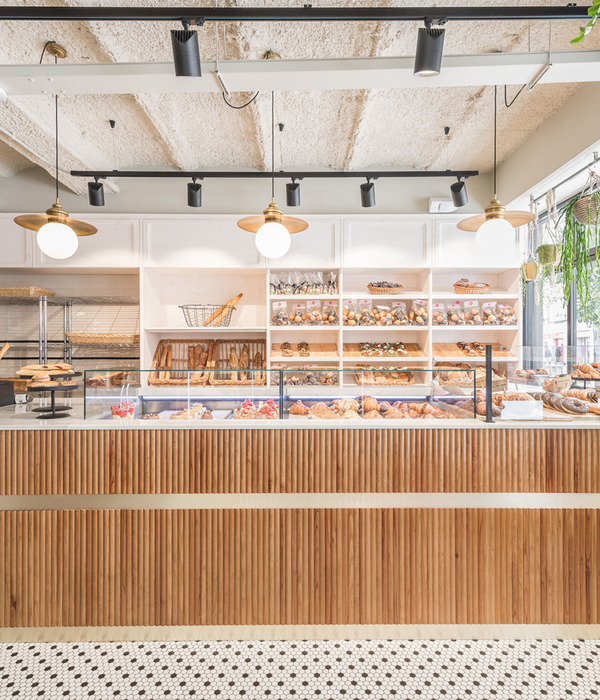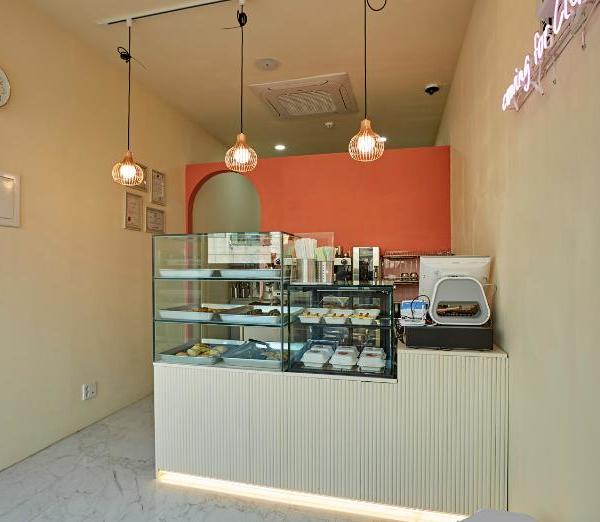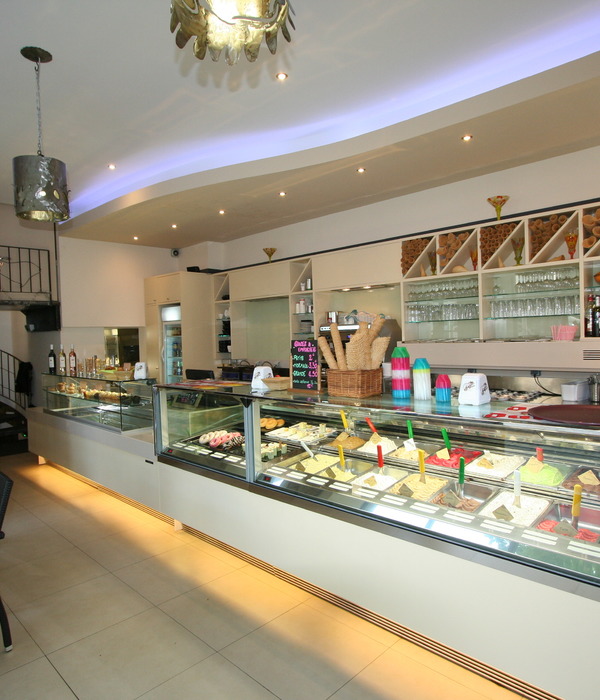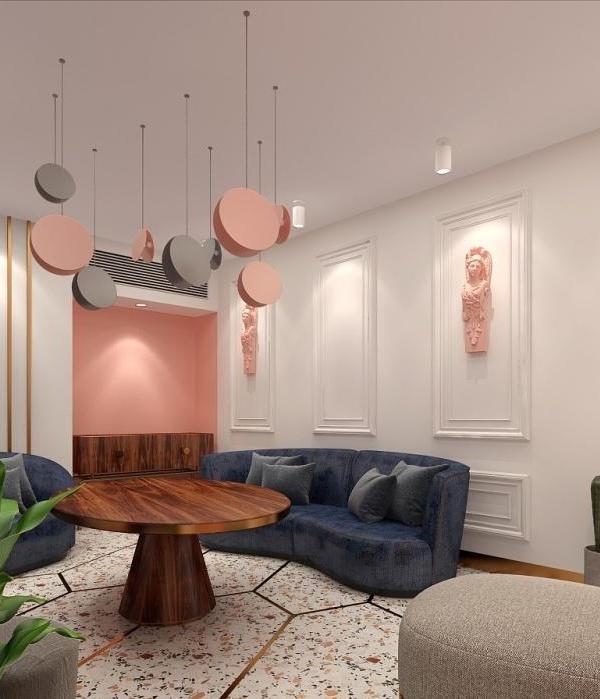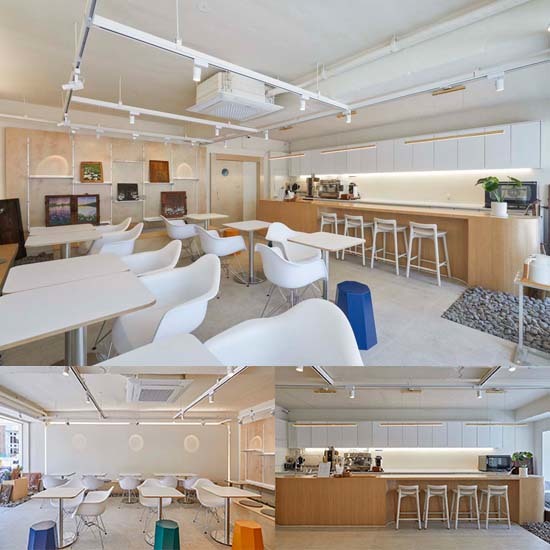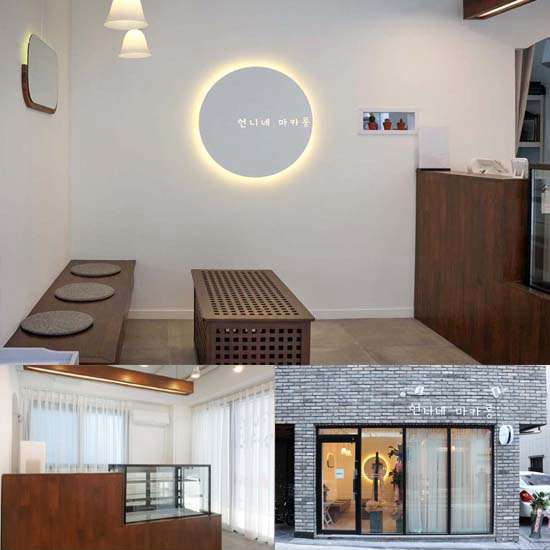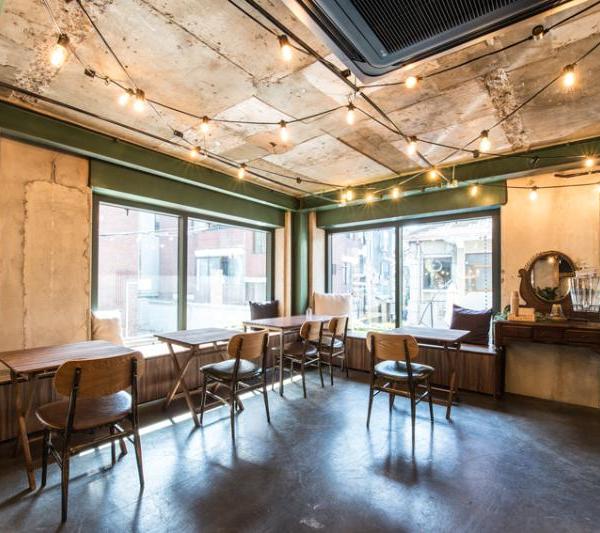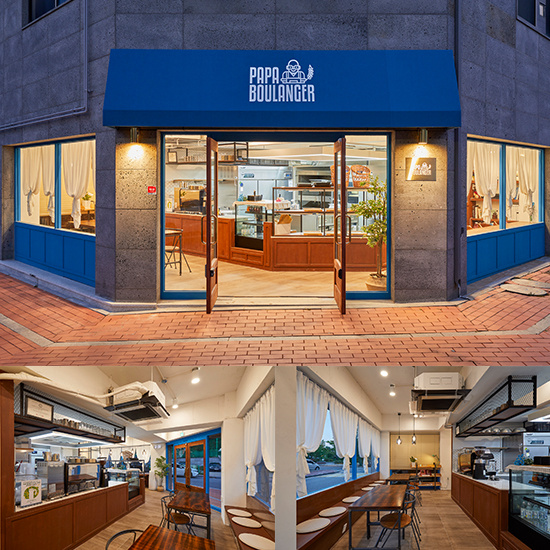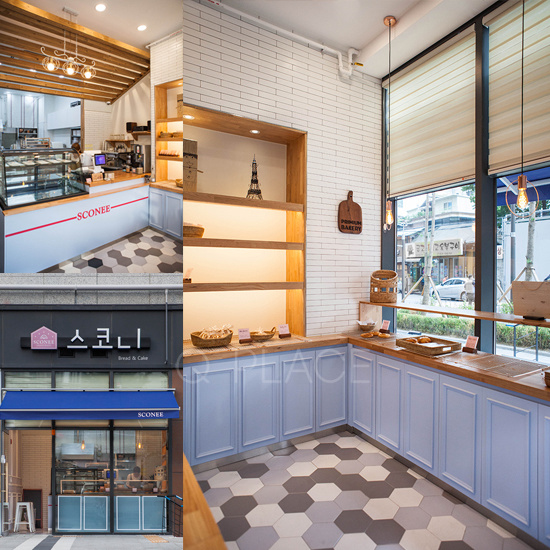- 项目名称:壹山树咖啡
- 设计方:北京山房筑艺术设计有限公司
- 联系邮箱:150049698@qq.com
- 主创:刘宇洁,钟山风
- 项目地址:秦皇岛西港花园
- 建筑面积:1600平方米
- 摄影版权:北京山房筑艺术设计有限公司
- 摄影师:鲁哈哈
滚滚的车轮推动时代的列车轰鸣向前,碾碎多少曾经的记忆。工业时代曾经的伟大在消费社会中褪色无力,城市更新的方法需要让历史的痕迹重新生发出新的枝芽。秦皇岛港的南栈房过去是存放堆煤的装载库房,随着港口产业的转型发展——西港东迁后,这里不再作为生产设施,现在已申报成为省级文物。秦皇岛港口的转型使其再一次进入人们的视野,作为历史的记忆,将要回到时代舞台的聚光灯下。在南栈房更新中,有两个非常重要的思考:一是如何创造记忆与此在的共生,二是如何让工业时代的遗迹在当下人们具身认知中再中心化。
The wheels of history keep rolling forward, crushing memories of the past. The greatness of the industrial age faded away and has been weakened in the consumer society. The methods of urban renewal shall help traces of history to regerminate. As the port moved eastward, Nanzhanfang (the Southern Warehouse) at the western part of Qinhuangdao Port is no longer used as a production facility: it was used for storing coal, but now is listed as a provincial cultural relic. The transformation of Qinhuangdao Port attracted the public’s attention: being part of historical memory, it will surely return to the spotlight in the new age.There are two important considerations in the renewal of Nanzhanfang: one is how to create a symbiosis between memory and “Dasein” (there-being); the other is how to recentralize the relics of industrial age in the present embodied cognition.
▼空间概览,preview ©北京山房筑艺术设计(摄影:鲁哈哈)
南栈房的设计要求是在南部做一个咖啡馆。这是一个重要的交往空间,其重要之处不是简单的创造一个休息空间,而是通过保留的历史建筑与植入的现代空间之间的共生实践,实现市民参与。这是南栈房的工业史记忆与新都市文化的对话。每一座建筑都在讲述自己的故事,南栈房壹山树咖啡厅的设计思考,着眼于从历史的基础中生发出当代生活的叙事。南栈房的建筑作为历史记忆,建筑的外立面完整地保留了这种历史痕迹。暗红色的铁门昭示着工业遗存的过去,并不出众的立面形象经过岁月的磨砺逐渐呈现出无可替代的厚重。室内空间的设计与建筑历史风貌保护的手法需要呈现出很大的容差,才能承载人们丰富的情感。壹山树咖啡新的室内功能空间与南栈房内部木梁桁架构筑起的工业文明进行着对话。新的功能以空间模组的方式介入历史记忆中,各自的叙事构成一种独特的场域空间体验。不同的功能,如咖啡、剧场、书吧与学习角等空间,以一种空间蒙太奇剪辑的方式相互对话,同时与南栈房历史空间共生。从历史到此在,在俯仰之间建立,这就是壹山树咖啡希望带给每一个顾客的具身体验。
▼一层平面,ground floor plan ©北京山房筑艺术设计
The design requirement of Nanzhanfang is to build a cafe in the south. This is an important space for communication. The important point is not simply to create a resting space, but to achieve citizen participation through the symbiosis practice between the preserved historical building and the implanted modern space. This is a dialogue between the industrial history memory of Nanzhanfang and the new urban culture.Every building tells its own story. The design of Nanzhanfang Moutreen Cafe focuses on creating narrative of contemporary life from the foundation of history. Nanzhanfang serves as a historical memory, and the facade of the building completely retains this historical trace. The dark red iron gate declares the past of the industrial relics, and the unremarkable facade image has gradually become irreplaceably “dignified” after years of tempering. The design of the interior space and the protection of the architectural historical features need to show a large tolerance in order to carry people’s rich emotions.The new indoor functional space of Moutreen Cafe is in dialogue with the industrial civilization built upon the wooden beam truss structure in Nanzhanfang. New functions intervene in historical memory in the form of spatial modules, and their respective narratives constitute a unique field spatial experience. Different functional areas, such as coffee, theater, book bar, and learning corner, communicate with each other in a way of spatial montage editing, and at the same time coexist with the historical space of Nanzhanfang. From the past to the present, it is the embodied experience that Moutreen Cafe hopes to bring to every customer.
▼入口立面,暗红色的铁门昭示着工业遗存的过去,entrance facade,dark red iron gate declaring the past of the industrial relics ©北京山房筑艺术设计(摄影:鲁哈哈)
按照布迪厄的场域理论所指出的,场域中的空间场域、资本价值和人的惯习,以一种网状结构的方式相互作用,通过改变其中任何一种要素,都会对场域构建产生影响。作为历史建筑的改造更新,公共空间的再中心成为港区场域重构的发力点。其方法路径是功能的网状并置,自内向外辐射重构。首先改变功能复合的工业化思维,基于对于消费社会片段和碎片化的客观认识,每一个功能模组自成体系,具有独立的吸引力,自成中心,构成子场域。多个子场域的并置成为一个网络,在历史建筑的空间中对话。
According to Bourdieu’s field theory, the spatial field, capital value, and human habit in the field interact in a net-like structure. Changes in any of these elements will affect the field. For renovation and renewal of historical buildings, the recentralization of public space has become the starting point for the reconstruction of the port area. The method path is the network juxtaposition of functions, reconstruction radiating from the inside to the outside. The very first step is to change the industrialized thinking of functional compounding. Based on the objective understanding of the fragmentation of consumer society, each functional module forms its own system, and has its own attraction and center, forming a subfield. Multiple subfields are juxtaposed to form a network, having dialogue with each other in the space of historical buildings.
▼咖啡空间,功能的网状并置,coffee space,network juxtaposition of functions ©北京山房筑艺术设计(摄影:鲁哈哈)
▼制作台,coffee counter ©北京山房筑艺术设计(摄影:鲁哈哈)
▼细部,details ©北京山房筑艺术设计(摄影:鲁哈哈)
壹山树咖啡以其独特的场域,使得南栈房原有工业库房遗迹转化成为具有历史遗迹的舞台,每一个到访者都以咖啡、阅读、会谈、嬉戏和观演等公共参与方式,具身的成为了舞台上演员与观者。消费与创造同时发生,这是一种极具魅力的场域体验。对于每一个空间的设计,设计的细节成就了空间的品质。开放式的岛台位于两个主入口的中间,它自然而然地构成了空间的主体,不仅定义了材质、色彩,更奠定了基调与氛围。精心挑选的家具于两侧对称而置,像在邀请三五好友围炉团坐。阳光洒在浸入历史的斑驳墙面,摇曳的树影在地面闪烁,光影勾勒的美感让时光穿梭于历史与当下,畅想着港区的过去与未来。
With its unique field, Moutreen Cafe transforms Nanzhanfang, an industrial warehouse, into a stage with historical relics where visitors become actors and spectators through public participation methods such as having coffee, reading, talking, playing and watching performances. Consumption and creation take place at the same time, which is a very charming field experience.For the design of each space, details contribute to the quality of the space. The open island shelf is placed in the middle of the two main entrances. It naturally constitutes the main body of the space, which not only defines the material and color, but establishes the tone and atmosphere.The carefully selected furniture is placed symmetrically on both sides, as if it is inviting friends to sit around the furnace. The sunshine spreads on the mottled walls immersed in history, and the swaying shadows of trees flicker on the ground. The beauty of light and shadow makes time travel between history and the present, inviting people to reminisce about the past and imagine the future of the port area.
▼座位区,seating area ©北京山房筑艺术设计(摄影:鲁哈哈)
▼对称布置的家具, symmetrical furniture ©北京山房筑艺术设计(摄影:鲁哈哈)
原木搭建的夹层书吧扩展了空间的层次与丰富性 。拾级而上,通往知识的殿堂。有咖啡小点满足味蕾,更有书籍文字抚慰精神。这里经常举办读书分享会,所有书籍都是社会性的捐赠,借由书的往来,让人与空间产生了联结。列斐伏尔重新发现日常生活的目的是让日常生活成为艺术品,对于壹山树咖啡的设计是重要的启发。艺术是生活的升华,设计是艺术的呈现。
The mezzanine wood book expands the richness of the space. Climbing up the stairs, visitors arrives at the hall of knowledge. There are coffee and desserts to satisfy the taste buds, and books to soothe the spirit. Reading sharing sessions are often held here. All books are donated by society. Through the exchange of books, people are connected with the space.Lefebvre’s rediscovery of daily life is to make daily life a work of art, which is an important inspiration for the design of Moutreen Cafe. Art is the sublimation of life, and design is the presentation of art.
▼原木搭建的夹层书吧扩展了空间的层次与丰富性,mezzanine wood book expands the richness of the space ©北京山房筑艺术设计(摄影:鲁哈哈)
▼夹层旁边是制作区 ©北京山房筑艺术设计(摄影:鲁哈哈) next to the mezzanine is the production area
▼夹层,mezzanine ©北京山房筑艺术设计(摄影:鲁哈哈)
▼书架细部,details of shelves ©北京山房筑艺术设计(摄影:鲁哈哈)
▼保留并加固历史建筑的屋架 ©北京山房筑艺术设计(摄影:鲁哈哈) preserving and strengthening the roof truss of the historic building
壹山树咖啡成为整个南栈房的中心,重构了南栈房的场域属性。从沉闷的被动参观,转换成为公共参与的舞台。通过网络的传播,南栈房壹山树咖啡的影响,已经辐射到城市中,成为秦皇岛最受欢迎的咖啡打卡地。山房筑的设计团队运用哲学与社会学方法,实践中运用了场域理论通过对局部空间改造来助力港区场域的重构与再中心化。如同一位顾客在到访壹山树咖啡的博客中写道的:一座咖啡馆创造了一段记忆、连接城市的历史与当下,悄无声息地撰写每个到访者生活的叙事。
Moutreen Cafe has become the center of the entire Nanzhanfang, reconstructing the field attributes of it. It changes from a dull passive visit to a stage for public participation. The internet extends the influence of Nanzhanfang Moutreen Cafe to the urban area and has become the most popular cafe check-in place in Qinhuangdao.The design team of Shanfangzhu employed philosophical and sociological methods, and applied field theory in practice to help the reconstruction and re-centralization of the port area by transforming a small local space.As a customer wrote in the blog of his visit to Moutreen Cafe: A cafe creates a memory, connects the history and the present of the city, and quietly composes the narrative of each visitor’s life.
▼阅览及上网冲浪,reading & surfing space ©北京山房筑艺术设计(摄影:鲁哈哈)
{{item.text_origin}}

